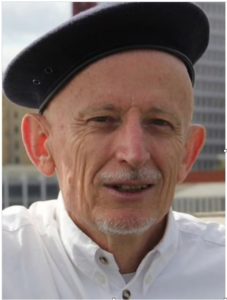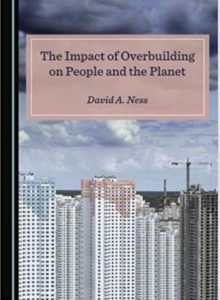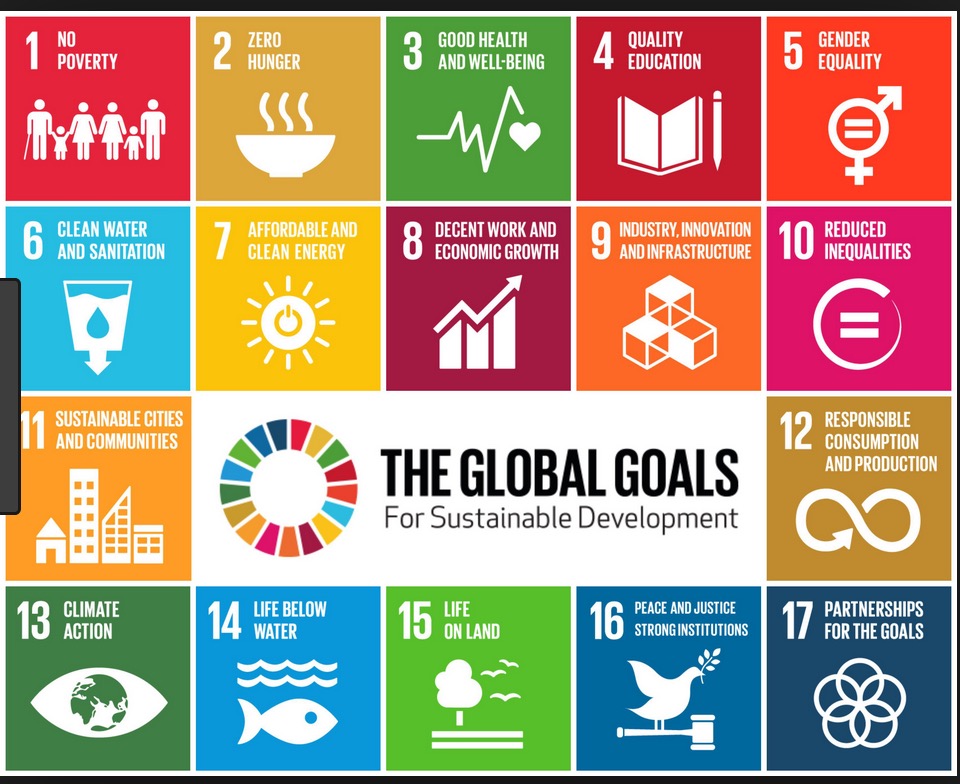Our Situation
The world is running out of raw materials and fresh water and is being overburdened with waste and the global construction industry is a major contributor being the largest consumer of resources and raw materials of any sector, responsible for about 33 per cent of emissions, 40 per cent of material consumption and 40 per cent of waste.
Our Challenge
In seeking to deal with this by advocating carbon neutral cities and a “sustainable” built environment, David Ness says that all the talk is about increasing efficiency of operational energy (heating, cooling, lighting) and reducing associated greenhouse gas emissions.There is a failure to account for resource consumption and “embodied carbon” in our buildings and we need to take this problem seriously. We need to find better ways to “reduce, reuse and recycle” in the construction industry. For anyone in doubt about the seriousness of this situation, look up the Guardian’s Concrete Week, five consecutive articles about the dangers of concrete as a construction material and major landfill component.
Our Question
How can we curtail this excessive resource consumption and waste production and protect our quality of life?
Our Guide to Action
And make no mistake, the size of this problem and the extent of the misery that we will experience if we do not solve it, means that we must all take action – as consumers and producers, as users of buildings and infrastructure and as those who write the policies that allow continued abuse or generate potential improvements.
In ‘The Impact of Overbuilding on People and the Planet’ (Cambridge Scholars Publishing, 2019) David A. Ness provides a guide to action, following the recommendations of the World Summit on Sustainable Development, Johannesburg, 2002, ‘which affirmed that all countries should promote sustainable consumption and production patterns by establishing a “sound material-cycle society”, in which the consumption of natural resources is reduced and environmental impacts are minimised. In both developed and developing countries, the key to achieving this was seen to be the promotion of the 3Rs (i.e. reduction, reuse and recycling of waste) in addition to ensuring the sound disposal of waste.’
David’s ideas are backed by years of research in Australia, Asia and especially China – and they are new, innovative, but also practical! “If we can make use of and adapt existing building and infrastructure stock, we save new carbon and resources,”
Practical Application
“We also need to design any new structures for ease of disassembly, adaptation and reuse, as part of a ‘circular’ built environment.” And to put this into practice he has been working with Arup. .
In 2017, the UniSA research team, of which David is a lead player, was awarded the Arup Global Research Challenge to further pursue his ideas. Part of the New Royal Adelaide Hospital was selected as a test case, with radio frequency identification tags attached to potentially reusable building components such as partitions, ceilings, doors and facade panels, and information such as location, size, type, and age of those components uploaded to a database. This successful ‘proof of concept’ opens the way to the next step – some commercially viable applications. It shows there’s an opportunity here to re-use systems that were previously sent to landfill or at best recycled for their raw materials,
The project has allowed the team to take advantage of relatively new technologies like BIM (Building Information Management) systems and cloud-based database storage systems to help track, categorise and organise building elements in a way that was never before possible.
What can you do?
There are many ideas in this book that you can combine with the latest technology if you are research inclined. But for me, the major impact of the book is on global mindsets. What we have for long taken as natural, normal, and indeed beneficial – that is, ever more building and construction – ‘more cranes in the skyline’ – are not natural, and we need to consider carefully whether the benefits they provide are worth the damage that they inevitably cause. This is not to say we should not build more, just that we need to do more to establish whether any particular proposal is of NET benefit.
For all who have a social and environmental conscience and concern, read
The Impact of Overbuilding on People and the Planet’ by David A Ness.
Hobson’s choice
Saturday before last as I stood in line to vote, the woman next to me said she did not believe that either of the major parties had policies that were helping Australia. I said that view was widely shared. Between us we decided to vote for the Party that fielded a local female representative and also a federal female representative on the basis that if we had enough women we could moderate the most egregious of profit seeking decisions and instead focus on proposals that helped people. The election results were hardly cheerful in that regard.
Yet the sun still shines, the leaves turn russet and gold, and we continue to do our best. I cannot complain. Any week in which you reconnect with an old friend and also solve a month’s long problem has to be a pretty good week.
David Ness – and the impact of overbuilding
I am a member of Research Gate, an academic organiation that keeps track of citations of your articles so you know who is using your work and what they are doing. Even though I ceased to be an academic years ago, every week I get one or two citations and this past week I discovered that David Ness, one of my first PhD students, and now an Adjunct Professor at the University of South Australia, was launching his first book ‘The Impact of Overbuilding on People and Planet” published by Cambridge Research Scholars. We had lost contact with each other years ago as both of us busied ourselves in our own work and David travelled extensively in Asia whilst my own travel was mostly Europe and North America. I rang to congratulate him and we met for coffee and talked for hours. A happy time. I will tell you about his work in my Wednesday post.
A problem solved.
A couple of months ago while I was in Melbourne to promote the ideas we were developing in Talking Infrastructure, Sally Nugent (the former CEO of the Asset Management Council) had suggested that if we wanted people to think more seriously about infrastructure decision making we would do well if we could develop a framework that others could use, and also find a way so that the fruits of their application of the framework coud be made widely available so that all can share in the learning. I had to agree it was a great idea, but at the time I could not think of how we could do it. So it sat on the back of the head as ideas do.
Meanwhile I had met Kate Quigley (at a bus stop!) a visiting American who was teaching Civil Aviation Management at the local campus of the University of South Australia. We discovered we shared an interest in teaching the art of creating good questions and she asked me if I would speak with her students. I agreed, and in designing an approach that I thought would be both educational and entertaining I thought of the hypothetical I had created for EAROPH in Brisbane and designed a question version that would lend itself to classroom teaching. As I thought about this it seemed to me that it also fitted Sally’s requirements. With Laura Mabikafola,General Manager, Skills Lab, (a Sage Group company), we are now in a testing phase, but it definitely seems to have promise for application not only in a lecture theatre but also within organisations or associations. Early days yet, but I will post more after we have done our testing.
Reading
David Ness: ‘The Impact of Overbuilding on People and Planet”
The Senate Inquiry – and Political Reactions
A few weeks ago in Brisbane I ran my first hypothetical. Its focus was the implementation of the United Nation’s 17 sustainability development goals. These goals, known as the SDGs, are for basic things like clean air and water, reducing hunger and poverty, increasing the quality of education, reducing gender inequalities and, in general, making life better for all Australians.
The results of the Senate Inquiry into the SDGs had just been released with a majority report (by Labor and the Greens) that said that the SDGs were important, we should be doing more, and recommended actions we could take. There was also a dissenting report (by the Liberal/National Coalition) that said, in effect, we were already doing everything and nothing would be served except more paperwork and anyway we don’t like the UN because it criticizes us unfairly (I’m not kidding about this last bit, this is what they said!) – and it concluded by saying ignore all the recommendations in the main report. So, there was not a lot of bi-partisan agreement there!
Well. who has the right of it?
Are we doing everything already or do we need to do more? According to a recent report by the Griffith Centre for Sustainable Enterprise, that looked at how the SDGs were being addressed (or not) in the policies of ten political parties.
“Australia’s ranking of 37 on the Sustainable Development Goals (SDGs) dashboard indicates that for a developed country there are aspects of Australian society that need to be altered if it deserves to be placed in the top 20 OECD countries”.
Australia has signed up to achieve the UN goals by 2030, however if the minority report correctly reflects the view and intentions of the Liberal/National coalition, we will not be able to rely on Government. Australian progress will need to be driven by concerned individuals and groups – our growing CIVIL SOCIETY, of which Talking infrastructure, along with many professional associations and NGOs, is a part.
Where to start?
The first thing to understand is that most people are unaware of this thrust by the United Nations. Ask anyone! Few know what they are. Many think that they don’t apply to us, but are for developing countries only. This is likely because of the UN’s earlier millenial goals which did apply only to developing countries.
The second thing is that there are 17 of these goals, with 169 specific targets. This is far too much for most of us to get our head around. Fortunately we don’t have to. Pick one or two that you feel strongly about and work to improve those! (just be aware of the others and mindful that what you do might impact another goal.)
Talking Infrastructure is now working with participants in the Hypothetical – all of whom were sent as representatives of their associations – to discuss what next steps can be taken since all of 17 goals either impact, or are impacted by, the infrastructure decisions we make.
Add your ideas to the hypothetical
The set up is this
” Six months have passed and the new government urgently wishes to address the issue of implementing the SDGs. Moreover it has realised that it has major leverage that has so far been little discussed – its power of the purse!
The Federal Government funds national infrastructure projects and provides substantial support to State and Local Government projects. The best and brightest (YOU) have been gathered together to explore how to take advantage of this.
Write some rules for evaluating infrastructure proposals so that they support the SDGs and Australia’s wellbeing.
Footnote: Thanks to EAROPH Australia for their courage in letting me play with this idea for them at their AGM

It has been a momentous week in Australia with our Federal Elections and the death of Bob Hawke (perhaps the last Prime Minister who was almost universally liked and respected – even by those who voted the other way) But throughout it all, each of us has got on with their life and work. This was my week. It started with a problem.
The Podcast
We had recorded our first podcast with many contributors. Gregory Punshon, our IT Director, had done a sterling job on the production side in between repairing major storm damage to his property and a run of internet outages, so that, with the exception of a small section we wished to re-record, our first episode was almost ‘in the can’. Happiness all round! Then we discovered we had been gazumped! AECOM had launched a podcast of their own called ‘Talking Infrastructure”. It was a sister podcast to ‘Talking Cities” that they had launched last year. It wasn’t focused on infrastructure decision making but it did have our name.
It took much of the week, but what initially appeared to be a serious problem, eventually resolved itself. We changed the name and in the process, developed a unique, stronger, clearer focus. Happiness returned. It just means a delay whilst we re-adjust – and, yes, re-record! More to come.
The Hypothetical
A few weeks ago, I ran a hypothetical for EAROPH Australia’s AGM, following the release of the Senate Inquiry Report into the implementation of the United Nation’s 17 Sustainability Development Goals (SDGs). Given that the Liberal minority report to the Senate inquiry hardly reflected enthusiasm, despite the fact that Australia has signed up to implement these goals by 2030, it looks as if the task of making Australia both fairer and stronger will fall to the Civil Society ( professional associations, community groups and NGOs) of which Talking Infrastructure is a part. I have written up the work done in Brisbane so that others can join in the fun of the hypothetical. I will post this on Wednesday.
Hope for the Future
The happiest conversation of this past week was two hours spent with a 19 year old barista at our local coffee shop. Chelsea is articulate, bright, cheerful, confident and, when not working, is studying criminal psychology. She is well informed about issues of the day and passionate about taking action to combat climate change. I have high hopes for this generation – provided that we do not damn their future by selfish infrastructure decisions made today. Let us not too blithely assume that just because we can ‘create jobs’ today, it is worth our young people having to pay the cost later. .
Researching :
Green infrastructure
Reading
Oren Klaff: Pitch Anything
Recommendation:
Worth exploring if you are a woman, employ a woman or want to support women in infrastructure Leadership. Criterion Conferences’ “Women in Transport and Infrastructure Leadership Summit” 19th – 22nd August 2019, Rydges on Swanston, Melbourne.





Recent Comments